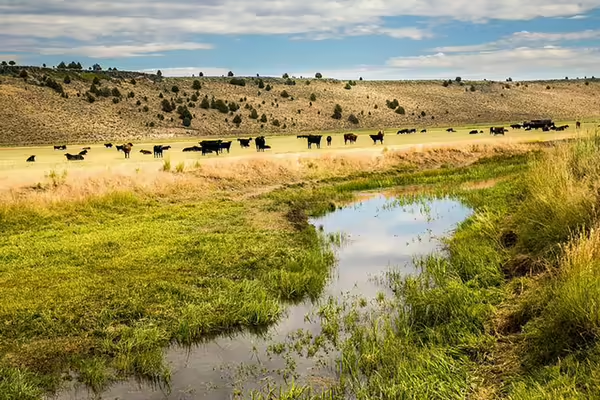
URBANA, Ill. — Livestock production is an important component of U.S. agriculture, with global demand for meat and dairy expected to double in the coming decades. This increase will lead to intensified grazing on U.S. grasslands, potentially exacerbating water quality degradation from livestock waste runoff into waterways. A new study from the University of Illinois Urbana-Champaign examines the combined influence of grazing and climate on the outflow of nitrogen from pastures into water resources under different grazing schemes. The researchers conclude that climate conditions could mitigate the effects of grazing on water quality, and that producers should consider weather when making decisions about stocking rates and grazing continuity.
“The main goal of this research is to identify factors affecting the transport of nitrogen into our water bodies and determine the right combination of stocking rate, grazing duration, and precipitation to maximize production while minimizing nitrogen transport,” said corresponding author Maria Chu, an associate professor in the Department of Agricultural and Biological Engineering (ABE), part of the College of Agricultural, Consumer and Environmental Sciences and The Grainger College of Engineering at the U. of I.
The researchers developed a modeling framework that simulated nitrogen transport from livestock grazing under different climate conditions. They evaluated the model using data from the USDA-ARS Oklahoma and Central Plains Agricultural Research Center in El Reno, Oklahoma. They collected data on land use, soil moisture, precipitation, temperature, and evapotranspiration, as well as water quality in the area.
Read the full release from the College of ACES.
University of Illinois Extension develops educational programs, extends knowledge, and builds partnerships to support people, communities, and their environments as part of the state's land-grant institution. Extension serves as the leading public outreach effort for University of Illinois Urbana-Champaign and the College of Agricultural, Consumer and Environmental Sciences in all 102 Illinois counties through a network of 27 multi-county units and over 700 staff statewide. Extension’s mission is responsive to eight strategic priorities — community, economy, environment, food and agriculture, health, partnerships, technology and discovery, and workforce excellence — that are served through six program areas — 4-H youth development, agriculture and agribusiness, community and economic development, family and consumer science, integrated health disparities, and natural resources, environment, and energy.